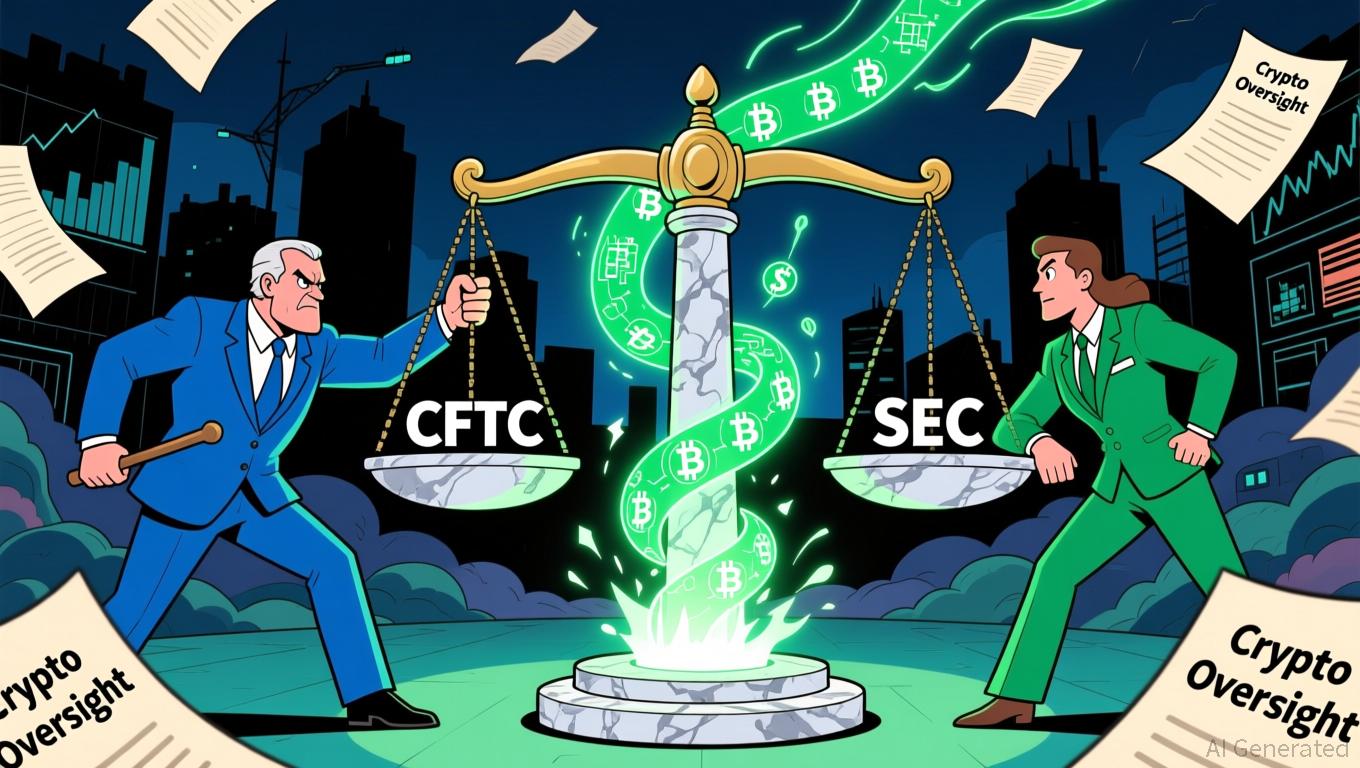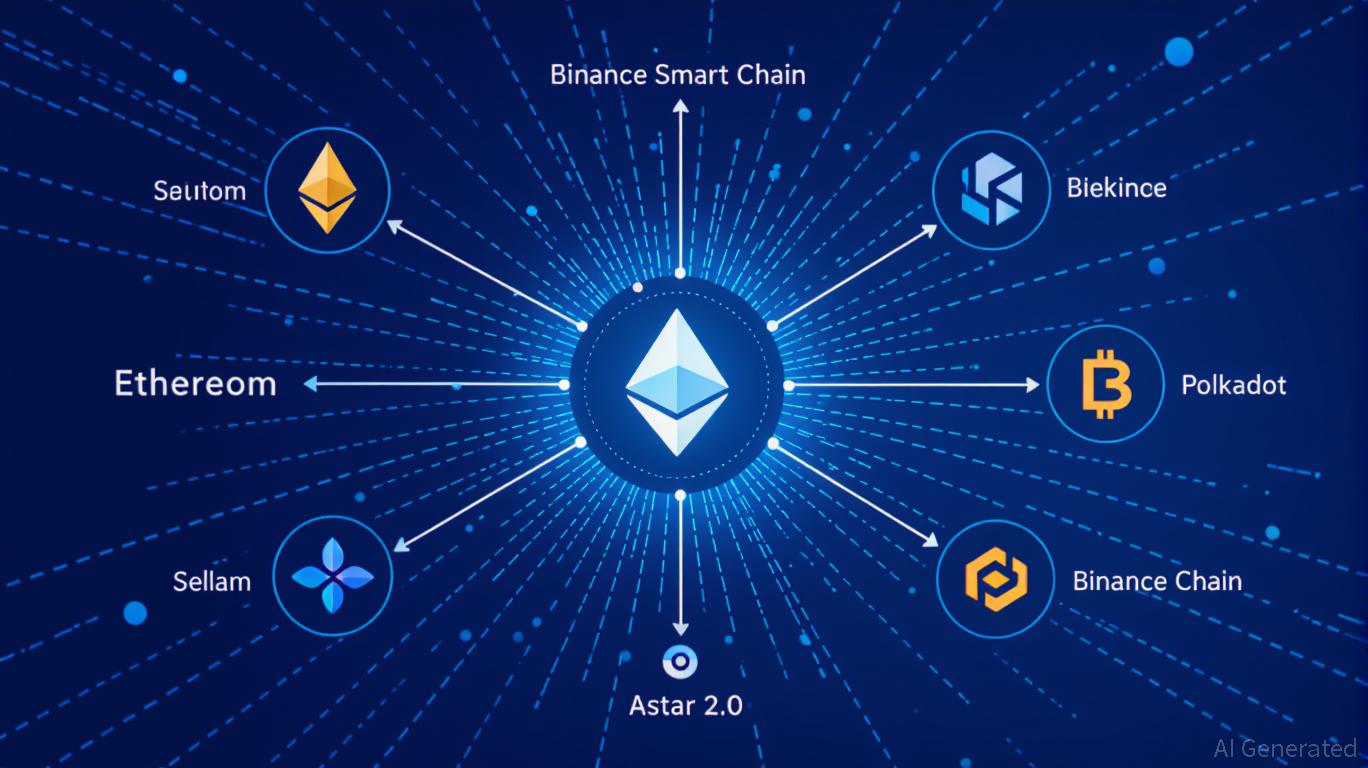Tokenized Deposits and Stablecoins: Competing for the Future of Blockchain-Based Finance
- Omid Malekan criticizes tokenized deposits for limited flexibility and interoperability compared to stablecoins, which offer cross-platform utility and 1:1 reserves. - Standard Chartered forecasts a $2 trillion RWA market by 2028, driven by DeFi growth and stablecoin liquidity, with Ethereum dominating due to its reliability and ecosystem. - Regulatory clarity, especially in the U.S., remains a critical challenge, with Standard Chartered warning of potential delays before 2026 midterm elections. - The de
Omid Malekan, an adjunct professor at Columbia Business School, expresses doubts about tokenized bank deposits, claiming they do not offer the same adaptability or technical benefits as stablecoins, as reported by
Malekan argues that tokenized deposits—which are essentially bank account balances recorded on a blockchain—are more limited in function than stablecoins. He compares them to "a checking account that only allows you to write checks to others at the same bank," highlighting their restricted use for transactions outside their own network, as per Cointelegraph. In contrast, stablecoins are fully backed and overcollateralized, providing enhanced security and flexibility. They can be moved between various crypto platforms, integrated into decentralized apps, and utilized in lending protocols—capabilities that tokenized deposits lack due to know-your-customer (KYC) requirements and restricted access.

In contrast, Standard Chartered foresees tokenized RWAs playing a pivotal role, projecting a dramatic rise in market value from $35 billion today to $2 trillion by 2028—a 5,600% increase. The bank credits this surge to the growing stablecoin sector, which has brought $300 billion in on-chain liquidity and promoted wider DeFi adoption. Geoffrey Kendrick, the bank’s head of digital assets research, believes stablecoins have paved the way for the tokenization of traditional assets like money-market funds, stocks, and real estate. He estimates $750 billion each in tokenized money-market funds and listed equities, with further expansion in funds, commodities, and corporate bonds, as mentioned by
According to
However, obstacles persist. Malekan’s concerns highlight the risks of tokenized deposits, such as their dependence on fractional reserves and limited ability to interact with other systems. At the same time, Standard Chartered warned that ongoing regulatory ambiguity—especially in the U.S.—could slow progress if clearer rules are not established before the 2026 midterm elections, as referenced by
This ongoing discussion mirrors larger issues within the financial sector. While Malekan sees tokenized deposits as less effective than stablecoins, Standard Chartered and other advocates believe RWAs can connect traditional finance with blockchain advancements. As DeFi moves from a specialized area to mainstream use, the competition to shape the future of financial infrastructure is heating up, according to
Disclaimer: The content of this article solely reflects the author's opinion and does not represent the platform in any capacity. This article is not intended to serve as a reference for making investment decisions.
You may also like
Bitcoin News Update: CFTC's Broader Role in Crypto Regulation Ignites Discussion on Clearer Rules
- U.S. lawmakers propose expanding CFTC's crypto oversight via a bill reclassifying spot trading, diverging from SEC's enforcement approach. - Harvard University invests $443M in BlackRock's IBIT ETF, reflecting institutional confidence in crypto as a legitimate asset class. - DeFi projects like Mutuum Finance raise $18.7M in presales, leveraging regulatory momentum and transparent on-chain credit systems. - RockToken's infrastructure-backed crypto contracts attract long-term investors with structured yiel

DASH Aster DEX's Latest On-Chain Growth and What It Means for DeFi Liquidity
- DASH Aster DEX leads 2025 DeFi shift with hybrid AMM-CEX model and multi-chain support (BNB, Ethereum , Solana), boosting TVL to $1.399B and Q3 daily trading volumes of $27.7B. - Platform's 1,650% ASTER token price surge post-TGE attracted 330,000 new wallets, with 94% of BSC-USD volume ($2B/day) driving institutional adoption via Binance/YZi partnerships. - ASTER token mechanics enable 80% margin trading, 5-7% staking rewards, and governance rights, while annual 5-7% fee burns create scarcity and align

Astar 2.0: Leading a New Generation of DeFi and Cross-Chain Advancements
- Astar 2.0 introduces a zkEVM mainnet and cross-chain interoperability, slashing gas fees and enabling 150,000 TPS with 2025 scalability goals. - Strategic partnerships with Mazda, Japan Airlines, and Sony demonstrate blockchain's real-world applications in logistics, loyalty programs, and digital asset tokenization. - Q3 2025 data shows $2.38M DeFi TVL growth and 20% active wallet increase, alongside a $3.16M institutional ASTR token acquisition. - The platform aims to solidify its role as a foundational

Aster DEX Introduces New On-Ramp: Transforming Retail Participation in DeFi
- Aster DEX integrates institutional-grade custody and privacy tech (zero-knowledge proofs) to bridge retail-institutional DeFi gaps via BNB Chain partnerships. - TVL surged to $2.18B by late 2025 through yield-bearing stablecoins and hidden orders, attracting both retail and institutional liquidity. - Despite compliance gaps and wash trading concerns, Aster's Binance alignment and Coinbase listing signals growing institutional validation.
